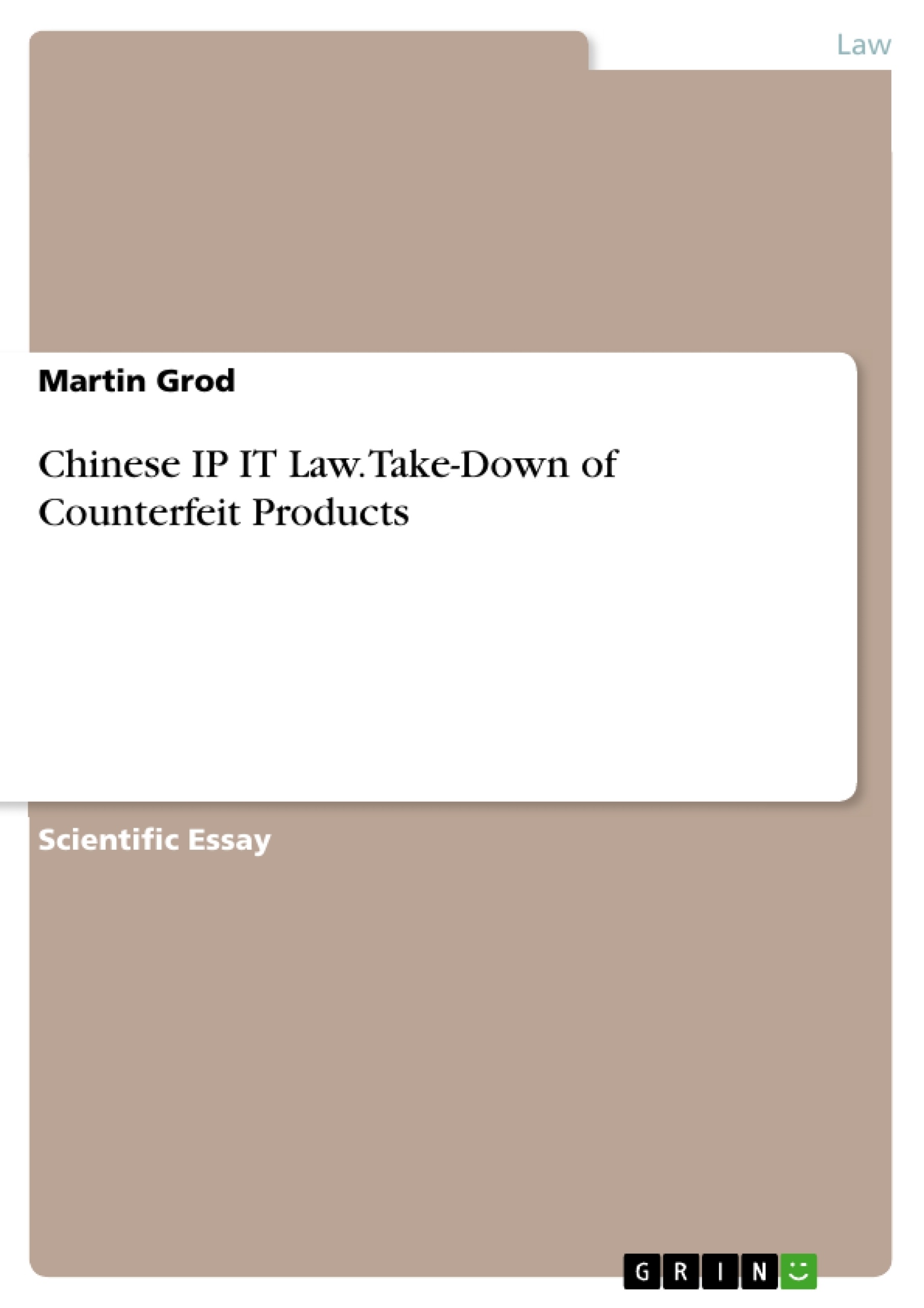This paper intends to cover measures available to immediately stop the infringer by achieving a take-down of the counterfeit products from Chinese e-commerce platforms. As such, this paper only covers take-down notices on the example of Alibaba and in a summary manner administrative enforcements as well as preliminary injunctions. This paper does not address any aspects of criminal enforcement or liability.
The business with counterfeit products is booming and has been described as the ”crime of the 21st century”. The BASCAP has conducted an investigation on behalf of the ICC with the aim, amongst others, to estimate the economical effect of counterfeiting on a worldwide basis. This investigation came to the conclusion that ”the total value of counterfeit and pirated products” reached $455 billion - $650 billion4 in 2008 and is expected to reach $1,220 trillion - $1,770 trillion in 2015.
According to the WCO, the PRC accounts for 71% of all seized counterfeit products worldwide in 2013 (46.6% for China and 24.7% for Hong Kong). The 2013 seizure statistics from the U.S. shows that the PRC is accountable for 93% of all seizures in terms of value in the U.S. (China for 68% and Hong Kong for 25%).
Inhaltsverzeichnis (Table of Contents)
- Introduction
- E-commerce and Counterfeit Products in China
- Informal Take-Down of Counterfeit Products
- Legal Basis
- Introduction
- IT Communication Regulation
- Chinese Tort Law
- Conclusion
- Take-down Notice in Practice
- General Consideration
- Alibaba's IT Policy
- Formal Proceedings for Take-Down of Counterfeit Products
- Timing
- Fees
- Good Faith Take-Down
- Conclusion
- Legal Basis
- Formal Take-Down
- Administrative Actions
- Scope, Purpose and Goals
- SAIC
- NCA
- SIPO
- Costs
- Scope, Purpose and Goals
- Legal Basis
- Requirements
- Preliminary Injunctions in Court Proceedings
- Proceeding
- Administrative Actions
Zielsetzung und Themenschwerpunkte (Objectives and Key Themes)
This paper explores the legal framework and practical challenges surrounding the take-down of counterfeit products on the e-commerce platform Alibaba, focusing on the specific example of China.
- The legal basis for taking down counterfeit products on e-commerce platforms in China.
- The role of IT communication regulation and Chinese tort law in combating counterfeit goods.
- The practical mechanisms implemented by Alibaba to address counterfeit product listings, including both informal take-down notices and formal legal proceedings.
- The considerations of good faith and procedural fairness in the take-down process.
- The potential for administrative and judicial interventions in removing counterfeit products from e-commerce platforms.
Zusammenfassung der Kapitel (Chapter Summaries)
- Introduction: This chapter sets the stage by introducing the growing issue of counterfeit products within the context of e-commerce in China.
- Informal Take-Down of Counterfeit Products: This chapter examines the legal basis for informal take-down procedures on Alibaba's platform. It explores the relevant regulations, including IT communication regulations and Chinese tort law, and outlines the process for issuing take-down notices in practice.
- Formal Take-Down: This chapter focuses on formal legal mechanisms for removing counterfeit products, exploring both administrative actions by relevant agencies like SAIC, NCA, and SIPO, as well as preliminary injunctions in court proceedings.
Schlüsselwörter (Keywords)
This paper focuses on the intersection of intellectual property (IP) rights, information technology (IT) law, and e-commerce in the context of counterfeit products on Alibaba's platform in China. The key concepts include informal and formal take-down procedures, legal basis, administrative actions, preliminary injunctions, good faith, and the role of relevant agencies like SAIC, NCA, and SIPO.
- Quote paper
- Martin Grod (Author), 2015, Chinese IP IT Law. Take-Down of Counterfeit Products, Munich, GRIN Verlag, https://www.grin.com/document/333733




